First day seeing patients at the Community Health Clinic, our new center in Falls Church which offers free and discount medical services to homeless families with children.
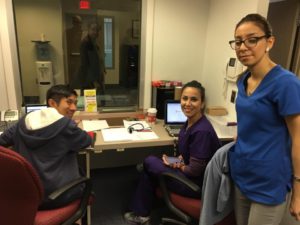
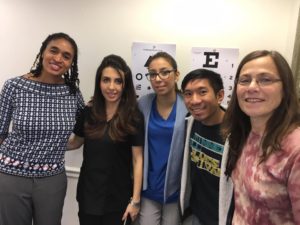
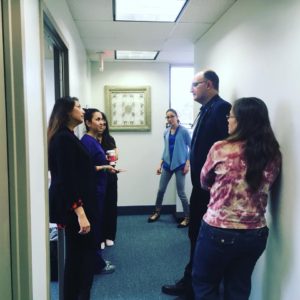
First day seeing patients at the Community Health Clinic, our new center in Falls Church which offers free and discount medical services to homeless families with children.



-Ron Lapitan, Former Community Outreach Coordinator
“This is exactly how we imagined it,” said Dr. Henry, one of the doctors who will staff our new medical clinic for homeless families with children, as she walked into the room where Ken, the fundraiser for the Homestretch shelter, and I were screwing nuts and bolts into a medical bed.
“When we said we would build a new clinic, we would literally build it with hammers and screws,” she said. We laughed.
With Center for Health and Human Rights, Homestretch, and A Place to Stand building our new Community Health Clinic in preparation to see our first patients.
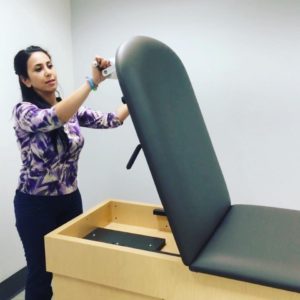
Homestretch staff build a medical bed.
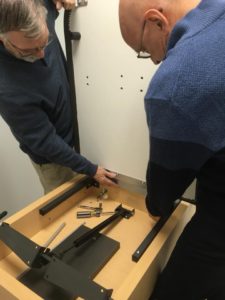
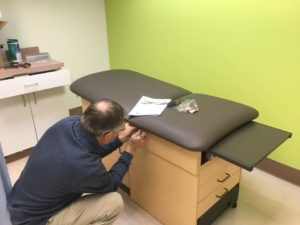
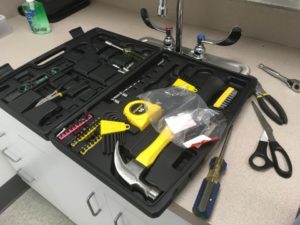
-Ron Lapitan, Former Community Outreach Coordinator
So much is happening inside the schools at our Health as Right Program this month that there often doesn’t seem time enough to write it all down.
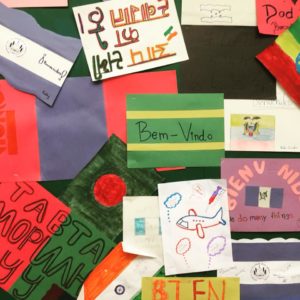 One of our Health as Right teams is at Yorktown High School, VA. They are an ESOL class which has integrated the program into their class curriculum rather than doing it as an after school activity. Their service project is to film a video to raise awareness about the experiences of immigrants and prejudice. This week, the Writing team sat down and drafted a thoughtful story that they cared about. In one scene, student actors will hold signs that read, “I am Muslim,” “I am Christian,” “I am Jewish,” “I am Buddhist,” “I am Hindu”, and others. They will then turn the signs around to show the words, “We are all the same.”
One of our Health as Right teams is at Yorktown High School, VA. They are an ESOL class which has integrated the program into their class curriculum rather than doing it as an after school activity. Their service project is to film a video to raise awareness about the experiences of immigrants and prejudice. This week, the Writing team sat down and drafted a thoughtful story that they cared about. In one scene, student actors will hold signs that read, “I am Muslim,” “I am Christian,” “I am Jewish,” “I am Buddhist,” “I am Hindu”, and others. They will then turn the signs around to show the words, “We are all the same.”
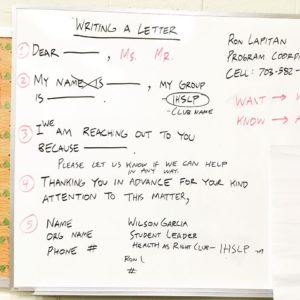 Another of our teams is at the International High School in Langley Park, MD, which has a student body of 100% immigrants and refugees. This team would like to provide a service to local refugees for their service project. This week, they wrote a letter to an organization that helps refugee families connect to housing, work, and legal services once they arrive to ask if they have any needs our students can assist with. In the process, our ESOL students learned about letter-writing conventions in the US.
Another of our teams is at the International High School in Langley Park, MD, which has a student body of 100% immigrants and refugees. This team would like to provide a service to local refugees for their service project. This week, they wrote a letter to an organization that helps refugee families connect to housing, work, and legal services once they arrive to ask if they have any needs our students can assist with. In the process, our ESOL students learned about letter-writing conventions in the US.
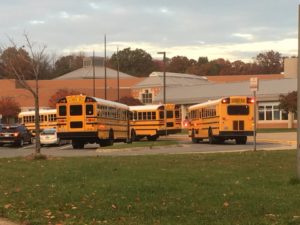 The newest addition to our program is Liberty Middle School, VA. This week they decided their service project: a clothing drive for local children in need. They also started our Health as Right curriculum, which teaches them about health and human rights and empowers them to cultivate their power of expression to talk about the kind of world they want to create. “I like this curriculum because it asks us about our ideas for the world, and it makes me smile,” said one of the students Tori afterwards with a big smile on her face.
The newest addition to our program is Liberty Middle School, VA. This week they decided their service project: a clothing drive for local children in need. They also started our Health as Right curriculum, which teaches them about health and human rights and empowers them to cultivate their power of expression to talk about the kind of world they want to create. “I like this curriculum because it asks us about our ideas for the world, and it makes me smile,” said one of the students Tori afterwards with a big smile on her face.
-Ron Lapitan, Former Community Outreach Coordinator
Our Yorktown High School Health as Right Club started their service project this week, producing a video to raise awareness about the experience of immigrants. During their Monday class, they split into teams to do pre-production roles such as research, writing, and promotion.
On Wednesday, they continued our curriculum on the Universal Declaration of Human Rights. This week’s theme was rights related to immigrants. As an ESL class, they had much to say on the topic.
“What do you think most Americans misunderstand about the experience of immigrants?” I asked my discussion group.
“They think it’s easy,” said Santos quickly. “What they don’t know is that people come because they lack the basic necessities.”
“They don’t know the feeling,” added Raul. When I asked what he meant, her elaborated, “They have always had freedom. They don’t know what it’s like to not have freedom.”
A lot of the youth also mentioned the numerous shots they had to get, sometimes only to find that they weren’t accepted because they took them in the wrong month and had to take them again. “I had 18 shots in my own country, and 8 more shots here,” Gobinder from Punjab commented with a laugh.
After learning human rights such as the right of every person to leave and return to their country (Article 13) and the right of every person to seek asylum in another country (Article 14), they drew pictures about their experience of immigrating and were asked if any of their human rights were violated.
“This might have been their best discussion yet,” reflected Ms. Smiles, the teacher who facilitated the second discussion group. Chinua from Mongolia in her group drew a picture about feeling like navigating a new culture was like being in a dream, and any minute she should wake up to a world where she wasn’t confused. Ayla from Turkey drew a picture of a face with a smile, the one she shows to the world, but behind it is a face of sadness, what she truly feels inside.
“People don’t appreciate what these kids go through. I don’t sometimes,” Ms. Smiles reflected. “I also underestimate their capacity for nuance. But this program is bringing out a really thoughtful and empowered side for some of them. And for those two or three that it affects, this is all worth it.”
“Do you know what a foreign accent is? It’s a sign of bravery.”
-Amy Chua
(Image: Gobinder’s drawing.)
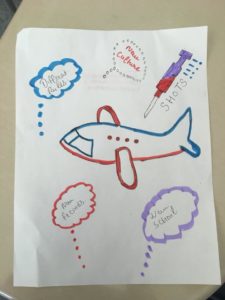
Recent Comments